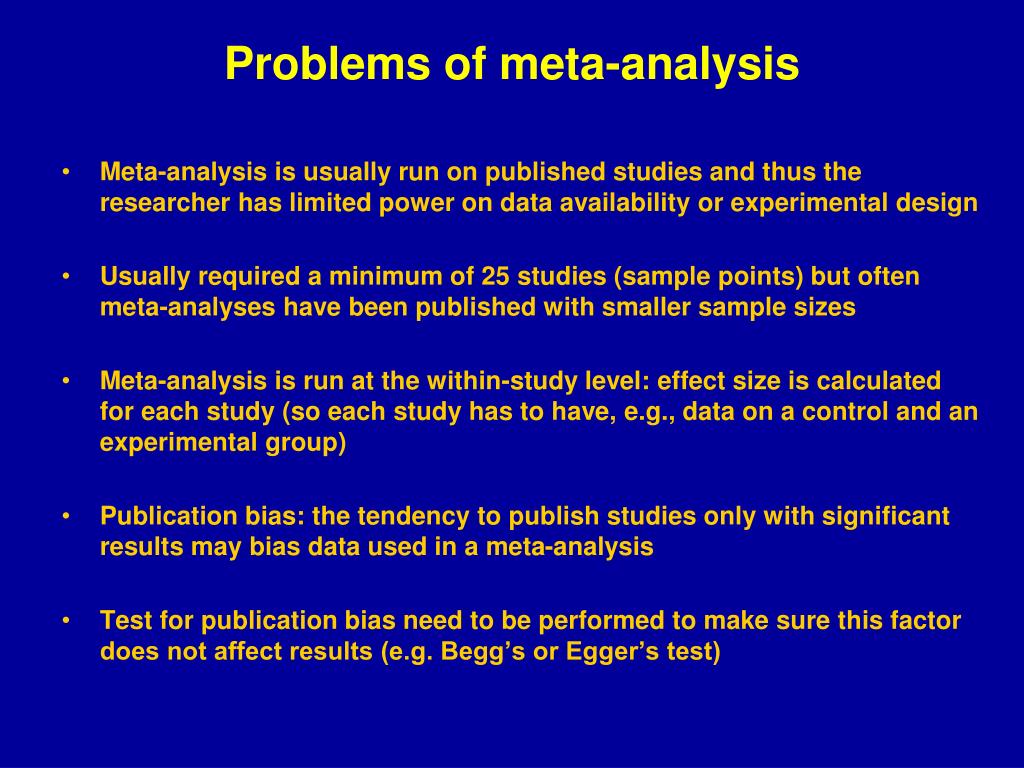

#META ANALYSIS DEFINITION AP PSYCHOLOGY TV#
You will have difficulty selecting a TV show to watch from the massive array of possibilities, for example, if the shows differ from each other in multiple ways or if you don’t have any strong preferences when you finally get to sit down in front of the TV. Meta-analysis is a robust tool that can helpresearchers overcome these challenges by assimilating data across studies identified through a literaturereview.

The meta-analysis revealed that choice overload exists-but only under certain conditions. For example, to clarify whether or not having more options makes it harder for people to settle on any one item, a meta-analysis of over 53 conflicting studies on the phenomenon was conducted. The technique can be used to answer social and behavioral questions large and small. With this purpose, effect-size indices are obtained. In reviewing the aggregate results of well-controlled studies meeting criteria for inclusion, meta-analysis can also reveal which research questions, test conditions, and research methods yield the most reliable results, not only providing findings of immediate clinical utility but furthering science. Meta-analysis is a research methodology that aims to quantitatively integrate the results of a set of empirical studies about a given topic. Meta-analysis is often used to validate observed phenomena, determine the conditions under which effects occur, and get enough clarity in clinical decision-making to indicate a course of therapeutic action when individual studies have produced disparate findings. Meta Analysis in Psychology is a powerful quantitative research technique that combines and analyzes data from multiple studies, providing a comprehensive and reliable answer to complex research questions. Lineup superiority is defined in this meta-analysis as a higher. Meta-analyses, and the questions they are attempting to answer, are typically specified and registered with a scientific organization, and, with the protocols and methods openly described and reviewed independently by outside investigators, the research process is highly transparent. Steblay, Department of Psychology, Augsburg College Jennifer E. Through statistical methods applied to the original data collected in the included studies, meta-analysis can account for and overcome many differences in the way the studies were conducted, such as the populations studied, how interventions were administered, and what outcomes were assessed and how. For example, cohort studies are likely to provide more reliable information than case reports. In addition, published guidelines not only describe standards for the inclusion of studies to be analyzed but also rank the quality of different types of studies. 2) Descriptive Statistics- are used to organize and summarize. Usually, meta-analysis is conducted on the gold standard of scientific research-randomized, controlled, double-blind trials. 1) Statistics- is a branch of mathematics that psychologists use to organize and analyze data. There are well-established scientific criteria for selecting studies for meta-analysis.


 0 kommentar(er)
0 kommentar(er)
